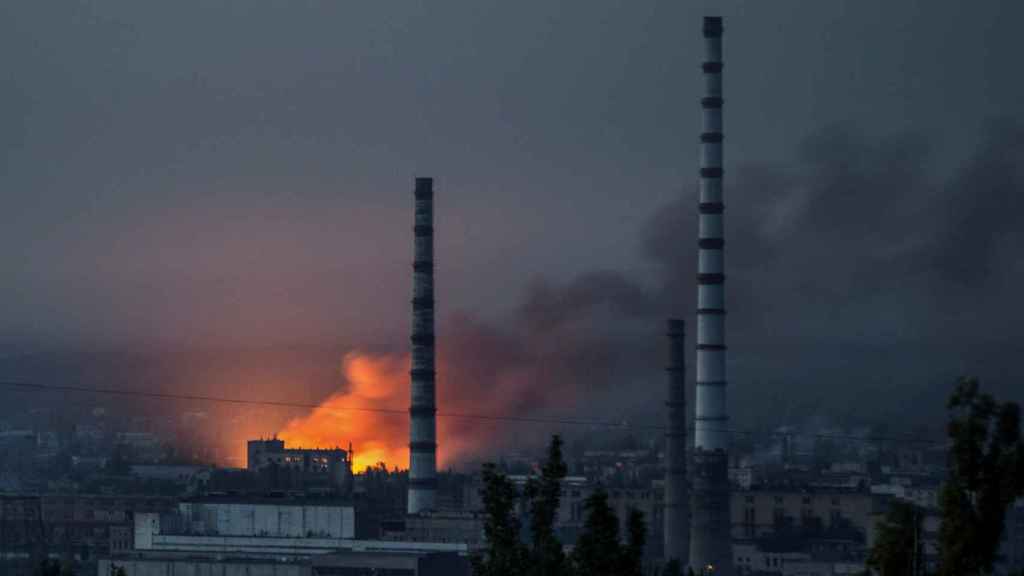Of all the possible scenarios for the Ukrainian army in the “cauldron” of Zolote and Hirske, the current one is not one of the worst. Despite the obvious risk of continuing to send men into an area with a marked disadvantage in arms and soldiers, it appears that the vast majority of the troops defending the area – 25 kilometers south of Lisichansk – has managed to escape from the Russian trap and has thus avoided pocketing. It was one of the most widespread fears in recent weeks: that the elite troops were not only the victims of a siege in Sievierodonetsk, but also in these towns north of the Popasna salient.
However, the rearguard troops that have been trapped seem sentenced to surrender or crush. It is not known exactly how many soldiers we are talking about or how much military equipment has been left in the bagged area. With the taking of Rai-Oleksandrivka and Loskutivka, Russia closed the siege on Zolote this Wednesday just after the great bulk of the deployed Ukrainian troops could withdraw. We know that there are troops left in Zolote and Hirske and that there are Territorial Defense forces present in the area. The exact number is difficult to determine.
The pro-Russian accounts spoke this Wednesday of more than 10,000 Ukrainian soldiers who would have surrendered to the invader, but that figure is greatly exaggerated. Ukraine has probably never had such a large number of men in such a small space. We would be talking about ten full battalions… and overcrowded there is nothing left in Donbas right now. Between those ten battalions and the rather testimonial numbers that the Ukrainian sources speak of, it is probably necessary to find a middle ground: perhaps three or four very small battalions, that is, around a thousand soldiers in total, shooting above .
[Los Balcanes piden a la UE que no les relegue en beneficio de Ucrania para su entrada al club]
As we said at the beginning, Ukraine has avoided total disaster, but losing a thousand men – even five hundred – in a maneuver that everyone was seeing coming is terrible news. We are talking about much-needed elite corps to defend Lisichansk, access to the T1302 and, above all, the Sloviansk-Kramatorsk axis, right now in the background for the Russian offensive, but which will soon become the main objective of the occupying army. .
Russian rushes are unnecessarily sticking
It now remains to be determined whether these rearguard troops, in whatever number, are going to fight as those at Mariupol did or are going to surrender to the enemy. The first option opens up a small “miracle” chance of reversing the trend and opening a hole in the Russian encirclement, which could allow an unlikely escape. The second would allow Russia close the battle of Zolote without many more casualties than those already suffered. Surely, kyiv is committed to holding out as long as possible and preventing these attack troops from being used on other fronts, but survival instinct may decide otherwise.
Fire and smoke rise from the Azot plant in Severodonetsk following a Russian attack on the Donetsk area
Reuters
In fact, already images of Russian troops have been leaked in Zolote itself, the other city next to Lisichansk that was in full control by the Ukrainian army in the Luhansk region. If the Russians or their allies have already gotten there so easily, it is very likely that the surrenders have already begun… or that the number of those trapped in the circle is less than what we have calculated and they have no way of defending themselves.
In any case, the pocketing of Zolote and Hirske should serve as a lesson to avoid similar maneuvers in the future. It is reasonable that Russia is putting all the meat on the grill to conquer villages and justify its “special military operation”. Any territory that can be colored red on a map serves as internal and external propaganda.. Exactly four months into the beginning of the invasion, progress is so meager that they have not even finished conquering the Lugansk region, which they already controlled almost fifty percent before the February invasion.
[El corredor Suwalki, talón de Aquiles de la OTAN: por qué puede empezar aquí la III Guerra Mundial]
However, Ukraine should not be in such a hurry and should not give so much importance to places that are undoubtedly loaded with symbolism, but whose defense may cost too many lives and too many weapons. As long as they are clear about the limits of their withdrawals, playing cat and mouse with the clumsy and excessive Russian army may still be a good idea. Retreat to counterattack. We are not talking about outright surrender, but about choosing those battles that can really be won.
Weapons that can change war
In fact, Ukraine now needs to weather the storm with as few losses as possible considering that the HIMARS have finally arrived from the United States. We are talking about high-precision missile launchers that can send projectiles eighty kilometers away, which means, in practice, the possibility of reaching any place controlled by the Russians. The war has progressed in such slow motion that it is difficult to find eighty kilometers in a straight line occupied by the invaders.
Obviously, these HIMARS require training and they are late for the fight for control of Lugansk, but they can help cut off Russian supply lines at Izium and thus hinder progress towards Sloviansk on the E40. Ukraine’s objective, as it cedes territory, is to make Russia pay for these conquests, that is, to make their communications and replacements as difficult as possible.
Let us remember that one of Russia’s main problems in this war is to maintain control over the places it is occupying. By this we are not referring only to a matter of law and order, but to the livelihood of the troops that remain in each conquered town. It’s no use taking Sievierodonetsk if I can’t then leave two or three battalions there or can’t supply them properly. If communication and supply lines are compromised and weapons, goods and replacements don’t arrive, Russia will be forced to back down, as it did in kyiv and as it did in Kharkiv. The present is important, of course, but in a war of attrition, you don’t want to obsess over the short term.














Add Comment